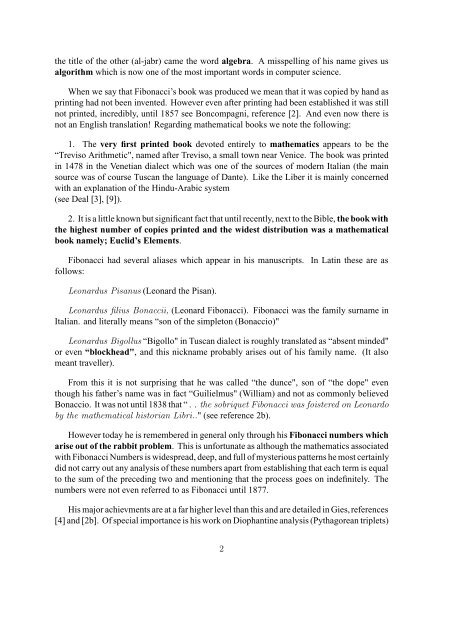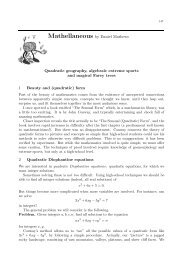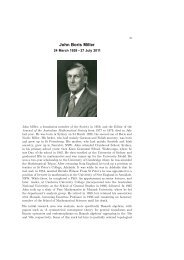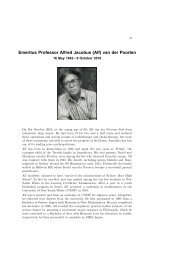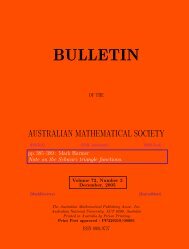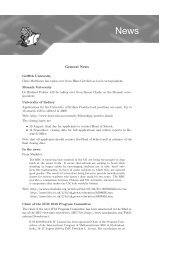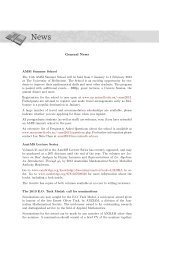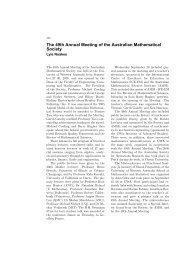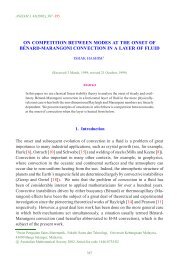FIBONACCI - HIS RABBITS AND HIS NUMBERS and KEPLER
FIBONACCI - HIS RABBITS AND HIS NUMBERS and KEPLER
FIBONACCI - HIS RABBITS AND HIS NUMBERS and KEPLER
Create successful ePaper yourself
Turn your PDF publications into a flip-book with our unique Google optimized e-Paper software.
the title of the other (al-jabr) came the word algebra. A misspelling of his name gives us<br />
algorithm which is now one of the most important words in computer science.<br />
When we say that Fibonacci’s book was produced we mean that it was copied by h<strong>and</strong> as<br />
printing had not been invented. However even after printing had been established it was still<br />
not printed, incredibly, until 1857 see Boncompagni, reference [2]. And even now there is<br />
not an English translation! Regarding mathematical books we note the following:<br />
1. The very first printed book devoted entirely to mathematics appears to be the<br />
“Treviso Arithmetic", named after Treviso, a small town near Venice. The book was printed<br />
in 1478 in the Venetian dialect which was one of the sources of modern Italian (the main<br />
source was of course Tuscan the language of Dante). Like the Liber it is mainly concerned<br />
with an explanation of the Hindu-Arabic system<br />
(see Deal [3], [9]).<br />
2. It is a little known but significant fact that until recently, next to the Bible, the book with<br />
the highest number of copies printed <strong>and</strong> the widest distribution was a mathematical<br />
book namely; Euclid’s Elements.<br />
Fibonacci had several aliases which appear in his manuscripts. In Latin these are as<br />
follows:<br />
Leonardus Pisanus (Leonard the Pisan).<br />
Leonardus filius Bonaccii, (Leonard Fibonacci). Fibonacci was the family surname in<br />
Italian. <strong>and</strong> literally means “son of the simpleton (Bonaccio)"<br />
Leonardus Bigollus “Bigollo" in Tuscan dialect is roughly translated as “absent minded"<br />
or even “blockhead", <strong>and</strong> this nickname probably arises out of his family name. (It also<br />
meant traveller).<br />
From this it is not surprising that he was called “the dunce", son of “the dope" even<br />
though his father’s name was in fact “Guilielmus" (William) <strong>and</strong> not as commonly believed<br />
Bonaccio. It was not until 1838 that “ . . the sobriquet Fibonacci was foistered on Leonardo<br />
by the mathematical historian Libri.." (see reference 2b).<br />
However today he is remembered in general only through his Fibonacci numbers which<br />
arise out of the rabbit problem. This is unfortunate as although the mathematics associated<br />
with Fibonacci Numbers is widespread, deep, <strong>and</strong> full of mysterious patterns he most certainly<br />
did not carry out any analysis of these numbers apart from establishing that each term is equal<br />
to the sum of the preceding two <strong>and</strong> mentioning that the process goes on indefinitely. The<br />
numbers were not even referred to as Fibonacci until 1877.<br />
His major achievments are at a far higher level than this <strong>and</strong> are detailed in Gies,references<br />
[4] <strong>and</strong> [2b]. Of special importance is his work on Diophantine analysis (Pythagorean triplets)<br />
2


